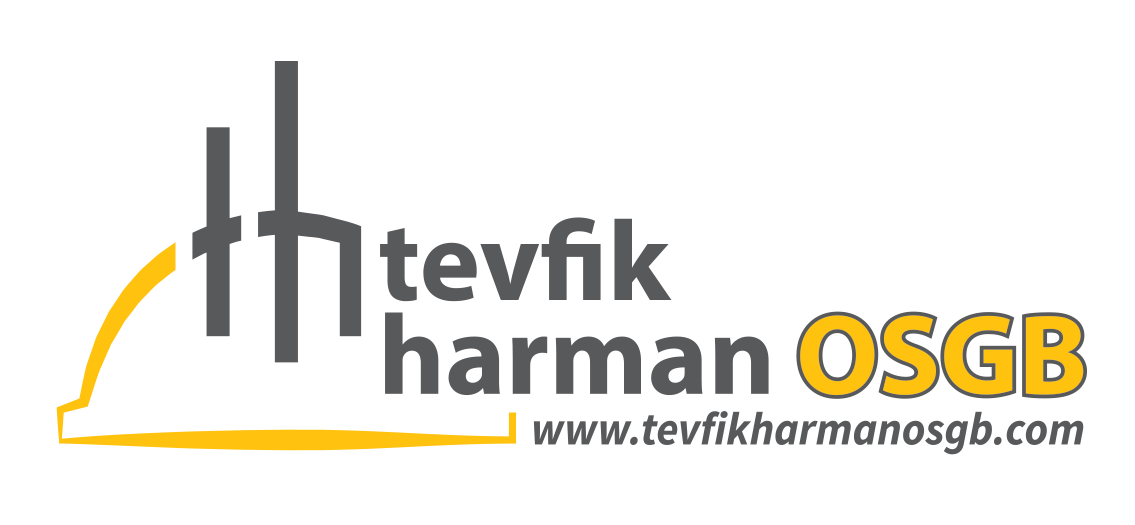DUTIES OF WORKPLACE DOCTORS
(REGULATION ON DUTIES, AUTHORITIES, RESPONSIBILITIES AND TRAININGS OF WORKPLACE PHYSICIAN AND OTHER HEALTH PERSONNEL ARTICLE-9)
1- Occupational physicians work together with other health personnel if they are present at the workplace.
2- Occupational physicians are obliged to perform the following duties within the scope of occupational health and safety services:
1- a. Guidance
1) To guide the employer regarding the health surveillance of the employees and the surveillance of the working environment within the scope of occupational health and safety services.
2) To make suggestions to the employer in order to ensure that the design of the workplace, the planning, organization and implementation of the work, including the substances used, and the selection of personal protective equipment, in relation to the works and changes to be made in the workplace, are carried out in accordance with the occupational health and safety legislation and general occupational health rules.
3) To advise the employer on the necessary activities in order to improve the health of the employees in the workplace.
4) Participating in research in the field of occupational health and safety, as well as conducting research in order to ensure the harmony between work and employee and to protect them from stress factors in the working environment, taking into account the physical and mental capacities of the employees in terms of ergonomic and psychosocial risks in the conduct of the work, and to consider these research results in guidance activities.
5) To provide advice to the employees on the nutritional needs and appropriate drinking water required by the work carried out, by constantly monitoring and supervising the general hygiene conditions of the workplace buildings and annexes, including the canteen, dining hall, dormitory, nursery and breastfeeding rooms, changing rooms, showers and toilets.
6) To investigate the causes of work accidents and occupational diseases that occur in the workplace and to make suggestions to the employer by working on the measures to be taken to prevent their recurrence.
7) To investigate the causes of the incidents that have occurred in the workplace but have the potential to harm the employee, equipment or workplace even though they do not cause death or injury, and to make suggestions to the employer.
8) To inform the employer in writing about the measures to be taken regarding occupational health and safety.
1- b. Risk assessment;
1) Participating in the work and implementation of risk assessment in terms of occupational health and safety, making suggestions to the employer about the health and safety measures to be taken as a result of the risk assessment and following up.
2) Close monitoring and monitoring of groups requiring special policies such as pregnant or breastfeeding women, those under the age of 18, those with a diagnosis or pre-diagnosis of an occupational disease, those with chronic diseases, the elderly, the disabled and those with alcohol, drug and drug addiction, and those who have had more than one occupational accident. to protect, inform and take special consideration in the risk assessment to be made.
1- c. Health surveillance;
1) To inform the employees about the employment and periodic examinations and examinations to be carried out within the scope of health surveillance and to obtain their consent.
2) To conduct health surveillance of employees, including night shifts.
3) In line with the results of the risk assessment made in the workplace with international standards, taking into account the personal characteristics of the employee, the danger class of the workplace and the nature of the work;
a) At least once every five years in workplaces in the less dangerous class,
b) Every three years at the latest in workplaces in the dangerous class,
c) At the very dangerous class workplaces, at least once a year,
Periodic inspection is repeated once. However, these periods are shortened if the workplace physician deems it necessary.
4) To arrange the results of the employment and periodic health examination and necessary examinations indicating that the employees are suitable for the job they will do, in accordance with the example given in ANNEX-2, and to keep them in the workplace.
5) To prepare a report by performing the necessary health examinations for the appropriate job placement of employees such as groups requiring special policy, those diagnosed or pre-diagnosed with an occupational disease, chronic disease, substance abuse, and those who have had more than one work accident, To repeat the health examinations of other employees in the environment where the person works.
6) To determine whether there is a relationship between absenteeism from work due to health problems and health hazards that may occur in the workplace, to plan measurements related to the working environment when necessary, to submit to the approval of the employer, and to evaluate the results in terms of the health of the employees.
7) To submit to the employer's approval by recommending that those who are found inconvenient to work in their previous job be given a task suitable for their current health status, by performing a return to work examination upon their return to work, after the employees have been away from repetitive work due to health reasons.
8) To provide the necessary hygiene trainings, to ensure that the necessary examinations and examinations are carried out, as well as the prevention and immunization studies for the control of communicable diseases.
9) Recording the work related to health surveillance in the workplace, making evaluations about work accidents and occupational diseases in cooperation with the occupational safety specialist, preparing the necessary preventive action plans by examining and researching to prevent the dangerous event from recurring, and preparing the annual work plan, including these issues, and submitting it to the employer's approval. To follow up the applications and to prepare the annual evaluation report in accordance with the example specified in Annex-3.
1- ç. Education, information and registration;
1) Working on the planning of occupational health and safety training of employees in accordance with the relevant legislation, presenting it to the employer's approval and making or controlling its applications.
2) To organize the first aid and emergency response services in the workplace and to provide the training of the personnel, to carry out the works in line with the relevant legislation.
3) To provide training to the managers, to the members of the occupational health and safety committee, if any, and to the employees on general health, occupational health and safety, hygiene, the harms of the use of addictive substances, personal protective equipment and collective protection methods, and to ensure the continuity of the training.
4) To inform the employees about the risks in the workplace, health surveillance, employment and periodic examinations.
5) To prepare the annual evaluation report, in which the results of occupational health and safety studies and health surveillance are recorded, in cooperation with the occupational safety expert, in accordance with the example in Annex-3.
1- d.Cooperation with relevant units;
1) According to the results of the health surveillance, to propose the necessary measurements within the scope of the surveillance of the working environment in cooperation with the occupational safety specialist, to evaluate the measurement results.
2) To work in cooperation with the occupational health and safety committee of which he is a member, if any.
3) To cooperate with the relevant parties in order to provide information and training on occupational health and safety in the workplace.
4) To participate in the development of programs for the improvement of existing practices, such as the analysis of work accidents and occupational diseases, programs for the improvement of work practices, and the evaluation and testing of new technology and equipment in terms of health.
5) To work in cooperation with hospitals authorized to issue health board reports on occupational diseases in accordance with the Regulation on Working Power and Loss of Profitability in Occupation, and to cooperate with relevant units on the rehabilitation of employees who have had a work accident or have an occupational disease.
6) Participating in research in the field of occupational health and safety.
7) To contribute to the occupational safety specialist in the preparation of occupational health and safety instructions and work permit procedures to be used where necessary.
8) To prepare the annual work plan, which includes the activities related to occupational health and safety to be carried out in the next year, together with the occupational safety specialist.
9) To support the work of the employee representatives and support staff in the workplace and to cooperate with these people.



